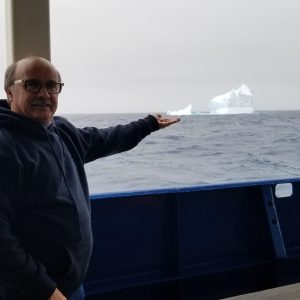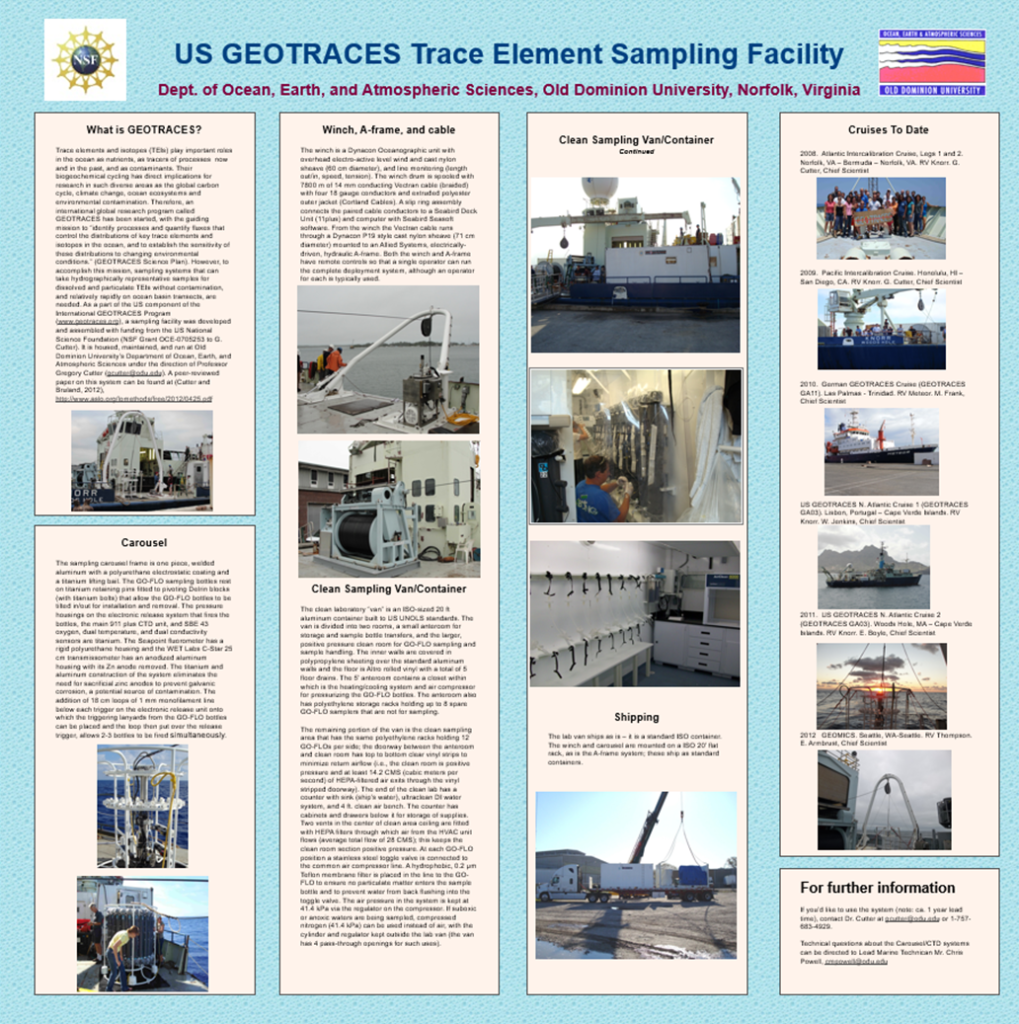Research

Research in our lab focuses on revealing the chemical and biological mechanisms that control the concentrations, chemical forms, and distributions of trace elements in the world’s oceans and some freshwater lakes and rivers. This comes under the name of biogeochemistry, but essentially any dissolved element can be transported by currents (physical oceanography), taken up or released by biological organisms (biological oceanography), its chemistry can affect its solubility or reactivity (chemical oceanography), and of course the weathering of continents and emissions from newly formed ocean crust (hydrothermal vents) are sources of elements (geological oceanography). So, our research requires understanding much about the biology, chemistry, geology and physics of the ocean and earth system.
The elements we have studied to date include antimony (Sb), arsenic (As), nitrogen (N), phosphorus (P), selenium (Se), and sulfur (S). This research is fundamental in nature, we are trying to understand how the ocean system is working, but it has many direct applications like assessing and mitigating pollution or contamination.
We have participated in or led research expeditions across the Atlantic and Pacific Oceans, in the Arctic Ocean to the North Pole, and in done research in many coastal waters like the Black Sea and estuaries such as the San Francisco and Chesapeake Bays. For the last 14 years much of our research has been part of the International GEOTRACES program, www.geotraces.org, whose mission is “To identify processes and quantify fluxes that control the distributions of key trace elements and isotopes in the ocean, and to establish the sensitivity of these distributions to changing environmental conditions.”
Cleaning your General Oceanic’s GO-FLO
A GO-FLO bottle is used to collect water samples for research of plankton, nutrient, pigment particles etc. A GO-FLO bottle is similar to a Niskin bottle except that a GO-FLO bottle is designed to avoid sample contamination. A water sample collected by a Niskin bottle can be contaminated by a microlayer present on the water surface enriched in organic material, trace elements and dust. The GO-FLO bottle is lowered into the water by a cable from the research vessel. It features a close-open-close operation. Contrary to the Niskin bottle, the GO-FLO bottle enters the water closed to avoid any possible contamination with the water surface. The top and bottom of the bottle are equipped with a stopper ball, which first have to rotate 90 degrees to open or close the bottle.
US GEOTRACES TRACE ELEMENT SAMPLING FACILITY
